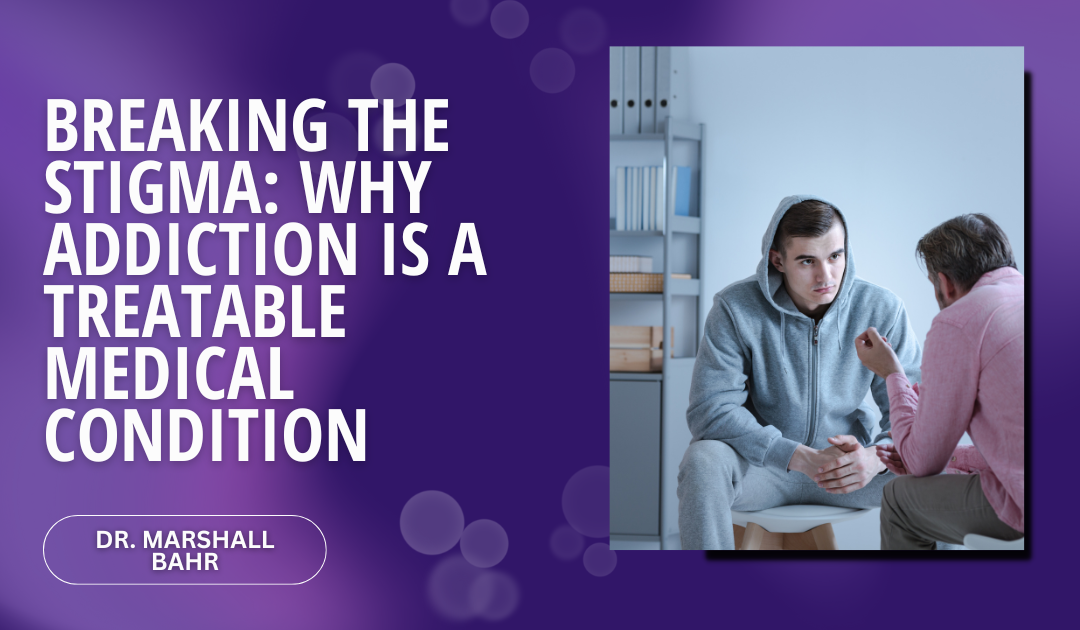Addiction has long been surrounded by stigma, often misunderstood as a moral failing or a lack of willpower. However, science has firmly established that addiction is a chronic, treatable medical condition. Recognizing addiction as a disease, rather than a choice, is essential to breaking the stigma and ensuring that those affected receive the care and compassion they need to recover.
At its core, addiction is a complex interaction between biology, environment, and behavior. It involves changes in the brain’s reward system, where substances like alcohol, opioids, or stimulants trigger an intense release of dopamine, creating a sense of euphoria. Over time, repeated exposure to these substances alters brain function, reducing the brain’s natural ability to experience pleasure and leading to compulsive substance use despite harmful consequences.
This understanding of addiction as a brain disorder shifts the conversation from blame to treatment. Just as conditions like diabetes or hypertension require medical intervention and lifestyle changes, so too does addiction. Treatment focuses on addressing both the physiological and psychological aspects of the disease, empowering individuals to regain control of their lives.
Medication-assisted treatment (MAT) is one of the most effective ways to treat addiction. MAT combines FDA-approved medications with counseling and behavioral therapies to reduce withdrawal symptoms and cravings. Medications like methadone, buprenorphine, and naltrexone help stabilize brain chemistry, allowing individuals to focus on recovery without the constant struggle against physical urges. This approach mirrors how insulin is used to manage diabetes or how statins are prescribed for heart disease.
Behavioral therapies are another cornerstone of addiction treatment. Cognitive-behavioral therapy (CBT), for example, helps individuals identify and change thought patterns that lead to substance use. These therapies also equip patients with coping strategies to manage triggers, stress, and cravings. The combination of medication and therapy creates a holistic treatment plan that addresses the root causes of addiction and supports long-term recovery.
Breaking the stigma surrounding addiction begins with education. Public awareness campaigns that emphasize addiction’s medical nature can help dispel myths and replace judgment with empathy. Personal stories of recovery shared by individuals who have battled addiction are also powerful tools in shifting societal attitudes. These narratives humanize the struggle and demonstrate that recovery is not only possible but also achievable with the right support.
Healthcare providers play a crucial role in challenging stigma. When physicians and clinicians approach addiction with the same professionalism and compassion as other medical conditions, they set a standard for equitable care. Integrating addiction medicine into mainstream healthcare systems ensures that patients feel valued and respected, reducing barriers to seeking treatment.
Support from family and friends is equally vital in combating stigma. Loved ones who understand addiction as a disease are more likely to provide the encouragement and assistance that individuals need during their recovery journey. This support network can make a significant difference in an individual’s ability to stay committed to treatment and maintain sobriety.
Policies and laws that prioritize treatment over punishment are also critical to breaking the stigma. Decriminalizing substance use and investing in harm-reduction strategies, such as needle exchange programs and safe consumption sites, demonstrate a commitment to treating addiction as a public health issue rather than a criminal one. These measures reduce the societal consequences of substance use while fostering a supportive environment for recovery.
The language we use when discussing addiction matters. Terms like “addict” or “junkie” reinforce negative stereotypes, while person-first language, such as “person with a substance use disorder,” recognizes the individual beyond their condition. Changing how we talk about addiction can significantly impact how society perceives and treats those affected.
Addiction is not a moral failing but a treatable medical condition. By acknowledging the science behind addiction and addressing the stigma through education, compassionate care, and supportive policies, society can create an environment where individuals feel empowered to seek help. Recovery is a journey, and breaking the stigma is a crucial step in ensuring that every person battling addiction has the opportunity to heal, rebuild, and thrive.

